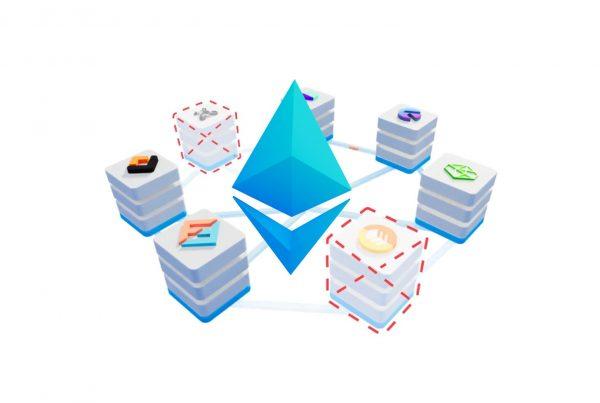
As of September 2022, there have been around 21,000 different cryptocurrencies. This number has only grown, especially with the popularity of meme coins like Dogecoin and Shiba Inu. The success of these coins has encouraged people to create their own.
It’s easy for people to get caught up in the cryptocurrency hype. Many digital currencies have popped up recently, backed by tech and entertainment personalities.
However, hearing about a cryptocurrency’s popularity shouldn’t be the only basis for investing in it. Digital currencies might not be physically tangible, but they will cost investors real money. For this reason, evaluating metrics such as market cap vs. volume in crypto is essential.
The Importance of Evaluating Cryptocurrency
As with all investments, timing is often a critical factor in cryptocurrency. However, evaluating the cryptocurrency you want to invest in is essential to ensure its viability and earning potential. This way, you don’t lose large sums of money as many crypto investors have.
Although many investors have found success in crypto, the market is still highly volatile. Cryptocurrencies can be unpredictable, so carefully evaluating one’s options is essential before making significant investments.
Metrics to Evaluate Cryptocurrency
An excellent way to evaluate any digital currency is by looking at various metrics. These figures can give potential investors an idea of how a particular cryptocurrency is doing within the market.
The metrics below can help investors identify crypto projects with high growth potential and avoid personal biases in their investment decisions.
Trading history
A coin’s trading history is one of the first metrics a new trader or investor should consider. Check the daily, weekly, monthly, and yearly trading history.
Graphs would usually be available for traders’ and enthusiasts’ perusal. This information will allow traders to glean trends concerning the coin’s performance. For example, steady price increases could indicate promising investment potential.
Market capitalization
Market capitalization, also known as a crypto project’s market cap, is the cryptocurrency’s total value. To calculate the market cap, you can multiply the current coin price by the number of coins currently in circulation.
Many traders look at the market cap as it indicates how much money people have already invested into the project. Usually, the higher the market cap, the more stable the cryptocurrency. However, coins with lower market caps also have greater possibilities for growth.
For example, the market cap for the more established Bitcoin as of January 19, 2023, is $403.07 billion. In comparison, the market cap for the cryptocurrency Metis Token is $90.7 million.
Still, the market cap shouldn’t be the only metric investors and traders should consider, especially with rapid crypto price fluctuations.
Trading volume
A coin’s trading volume, also known as volume 24hr, is also essential. This metric indicates the value of all transactions within the past 24 hours. It shows the coin’s liquidity or how easy it is to buy or sell it.
Coins with high trading volumes could indicate high liquidity, meaning it would be relatively easier to trade. Traders could buy as much as they wanted without increasing the coin price too much.
On the other hand, coins with low trading volumes could either be new, abandoned, or lack real-world use cases. Buying a low-trading volume coin can also significantly affect its price.
While trading volume is an important metric, it’s also vital for traders to be careful of spoofing attempts. Spoofing occurs when people or groups fake buy and sell orders to increase their trading volume.
Circulating, total, and max supply
A coin’s supply is another metric that could affect its price and other factors. There are three types one could consider. These are the circulating, total, and max supply of a cryptocurrency.
The circulating supply refers to the number of coins or tokens currently circulating the market. On the other hand, the total supply is the total number of coins created so far.
A coin’s max supply includes all coins that have and will ever come into existence. Depending on the cryptocurrency project, a coin can have either a fixed or infinite max supply.
Coins with a finite max supply, such as Bitcoin, are often considered more scarce and valuable. For this reason, investors place more value on these coins, thus increasing their value.
Other Factors to Consider
Cryptocurrency metrics allow traders and investors to evaluate a coin’s profitability or growth potential. However, these are not the only factors to take into account.
Research is essential before making any crypto investments. Here are some other factors to consider before investing in a cryptocurrency project.
- The project’s online presence. Check out the crypto project’s website and social media accounts. These platforms can give an overview of the project, the team behind it, its community, and how it works.
- White paper and road map. White papers are documents that give insight into the technicalities of the project and its concept. The road map shows the team’s plans for growing and maintaining the project. Both can help traders determine the project’s viability.
- The team. Look at the people behind the project. Ideally, they should be individuals with proven success and experience in crypto. A project that doesn’t disclose who’s behind it is usually a red flag.
- Investors. Check whether major investors or investing firms have already invested their money into the project. Usually, this is a sign of credibility and growth potential.
- The community. The community surrounding a crypto project can significantly influence its continued success. However, it’s essential to determine if the project matches the hype. Community enthusiasm alone does not shape a project’s success and growth potential.
The crypto sphere is full of enthusiasm and potential, making it an exciting space for investors and traders. However, cryptocurrencies can also be volatile, making careful consideration essential in significant investment decisions.



